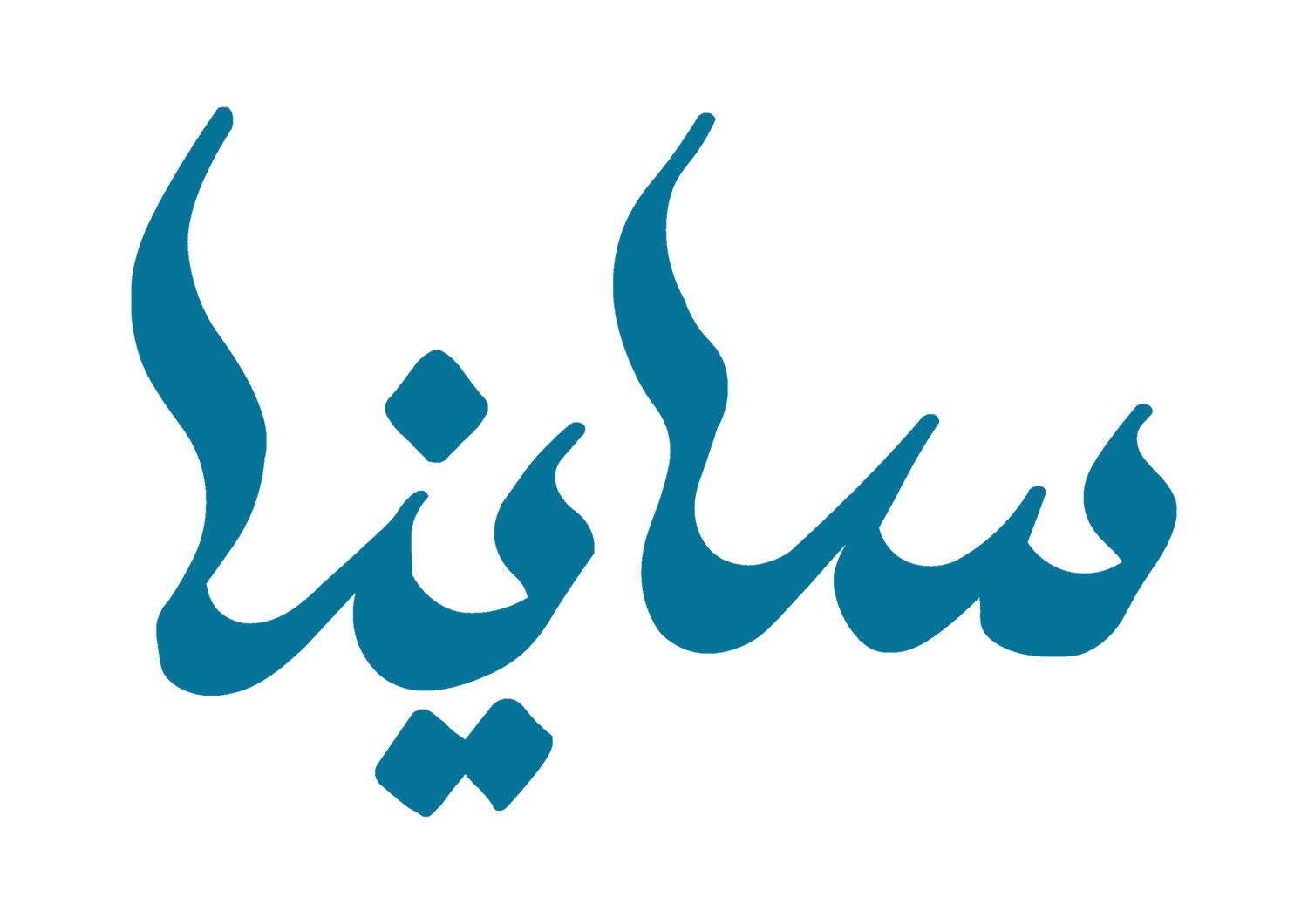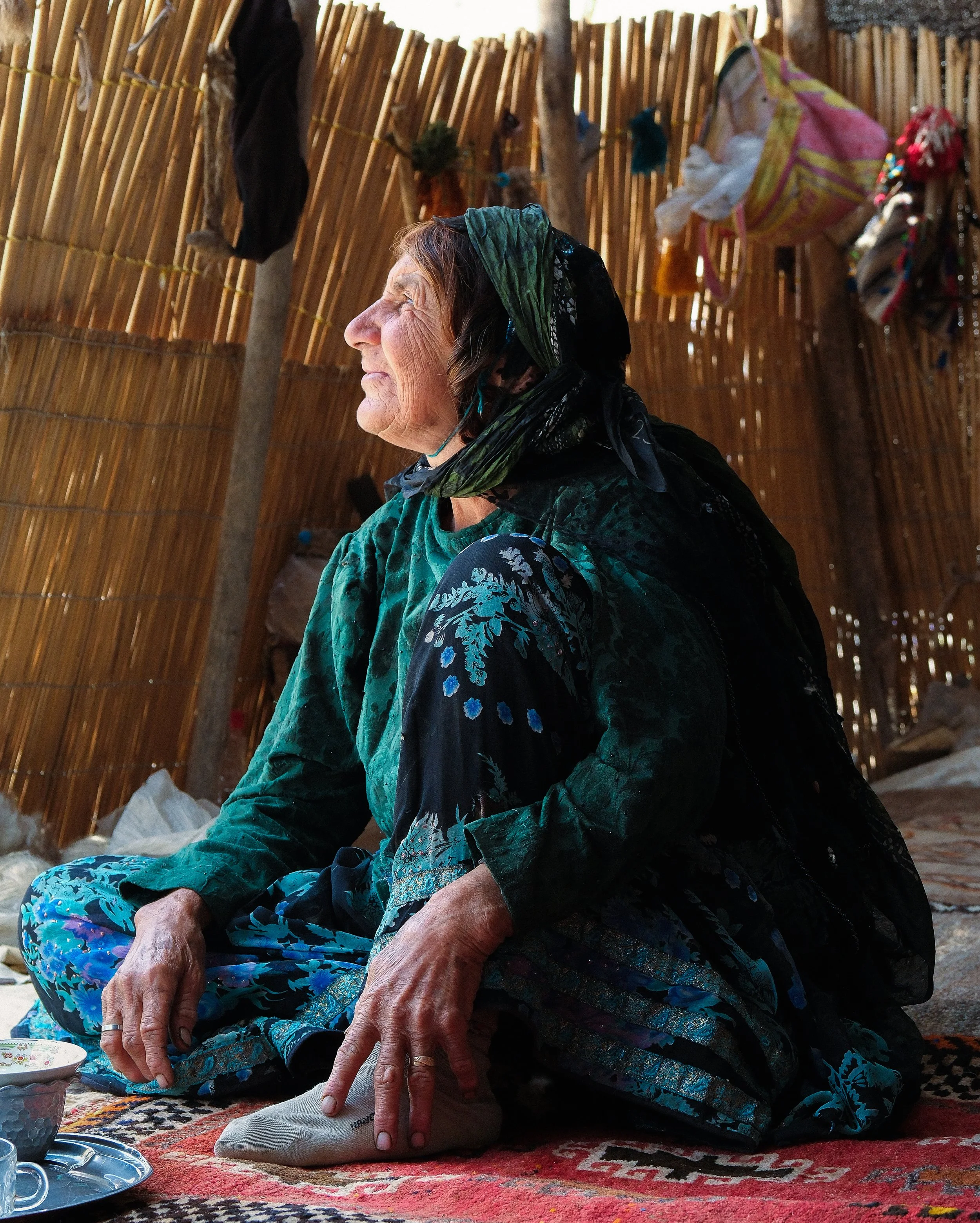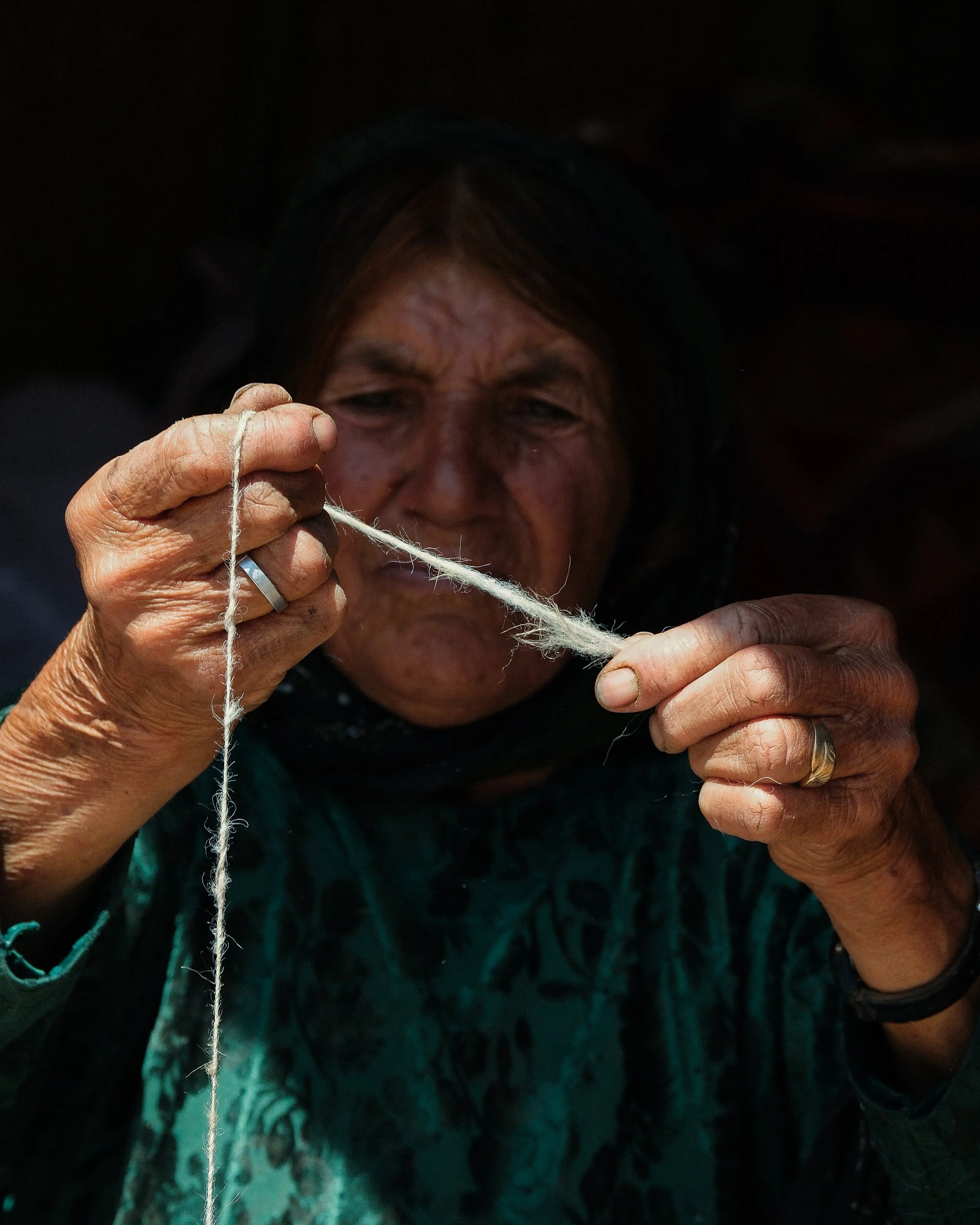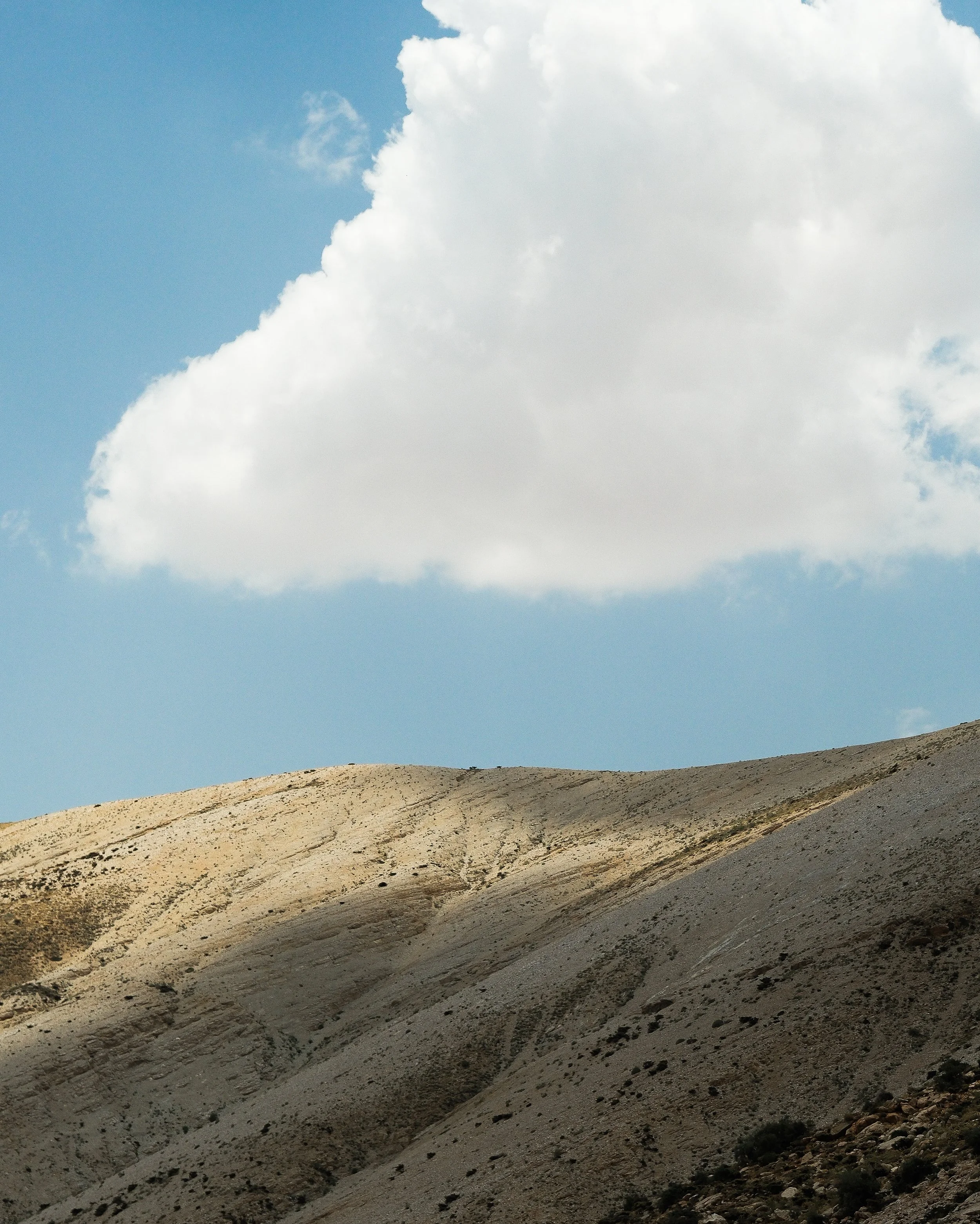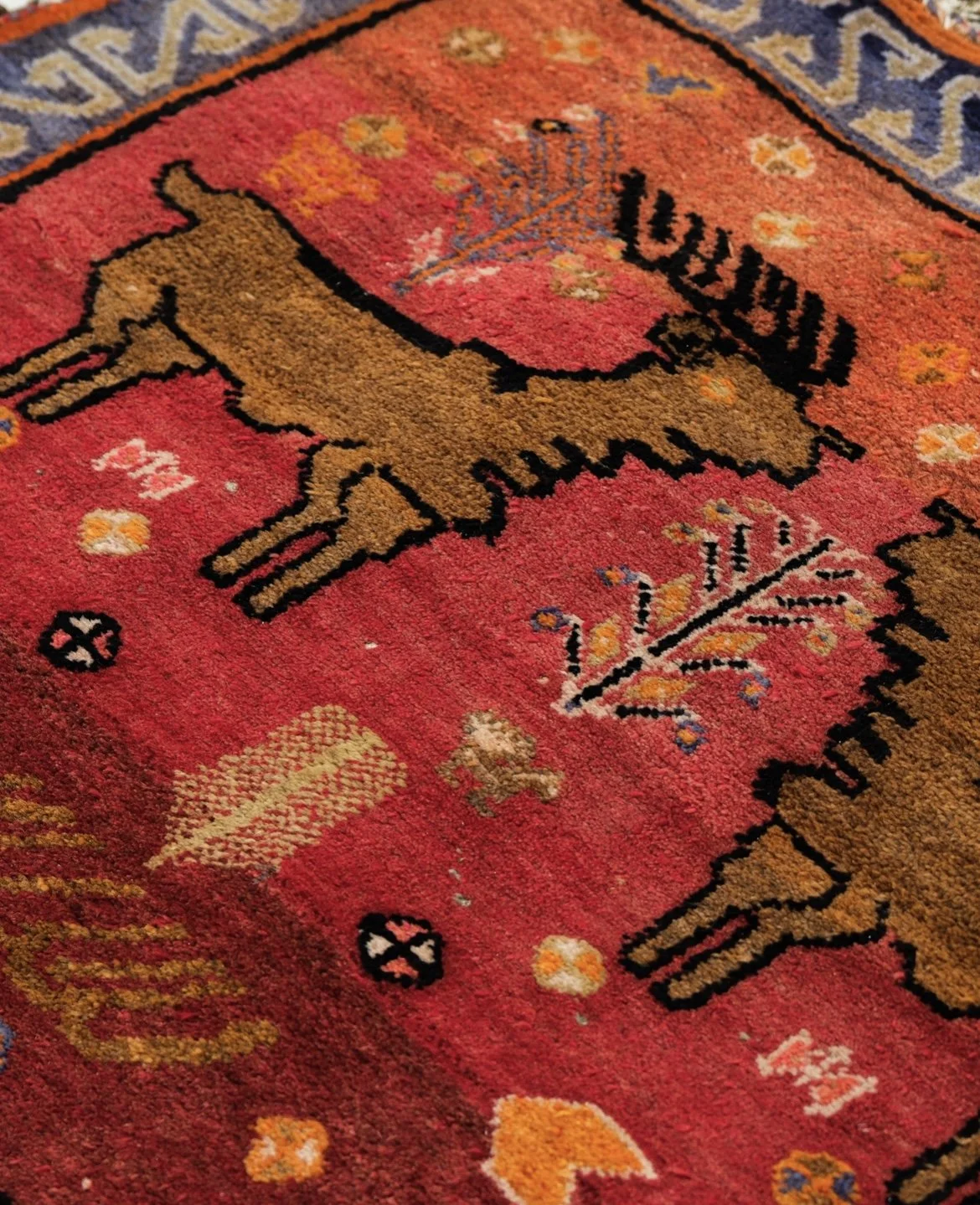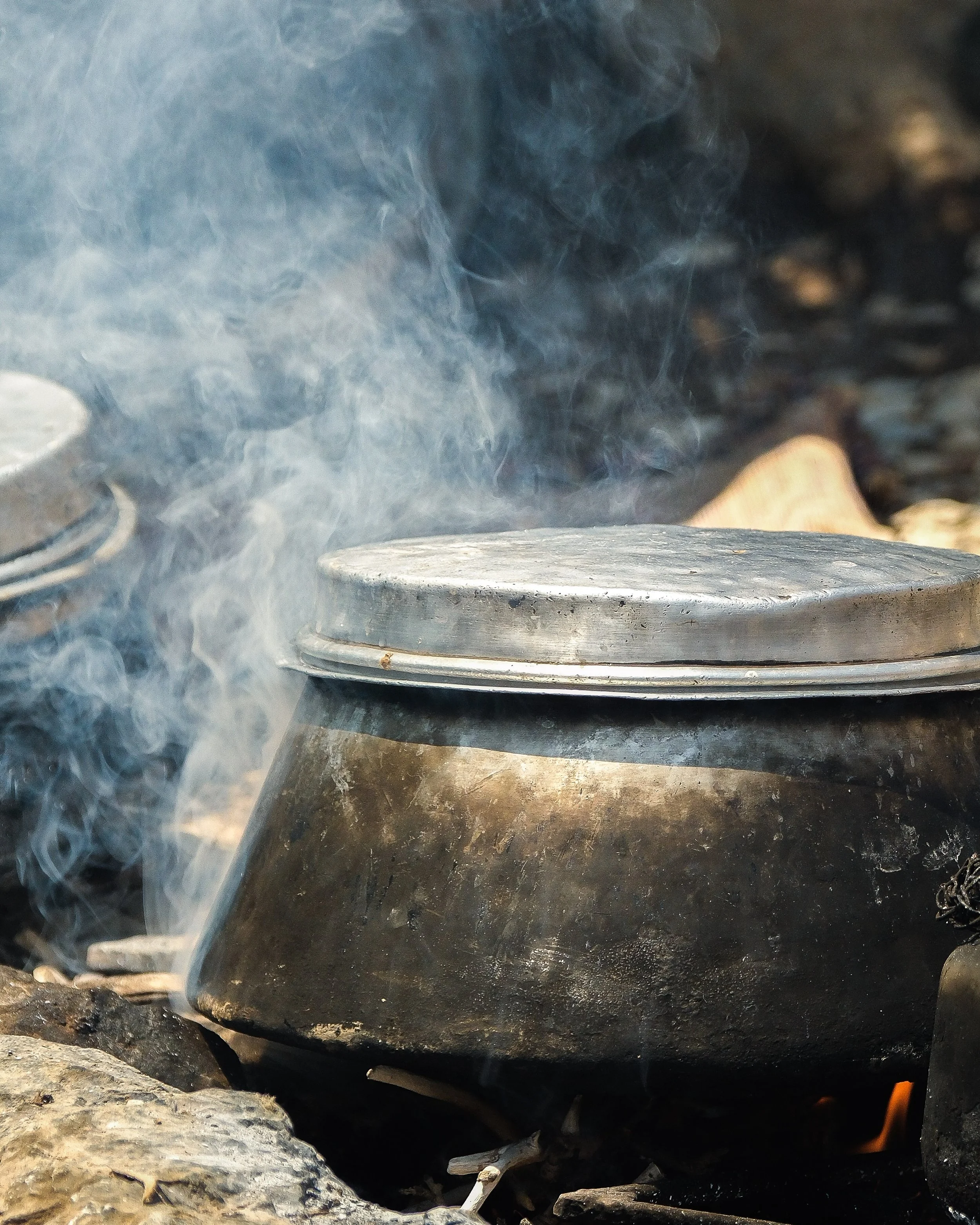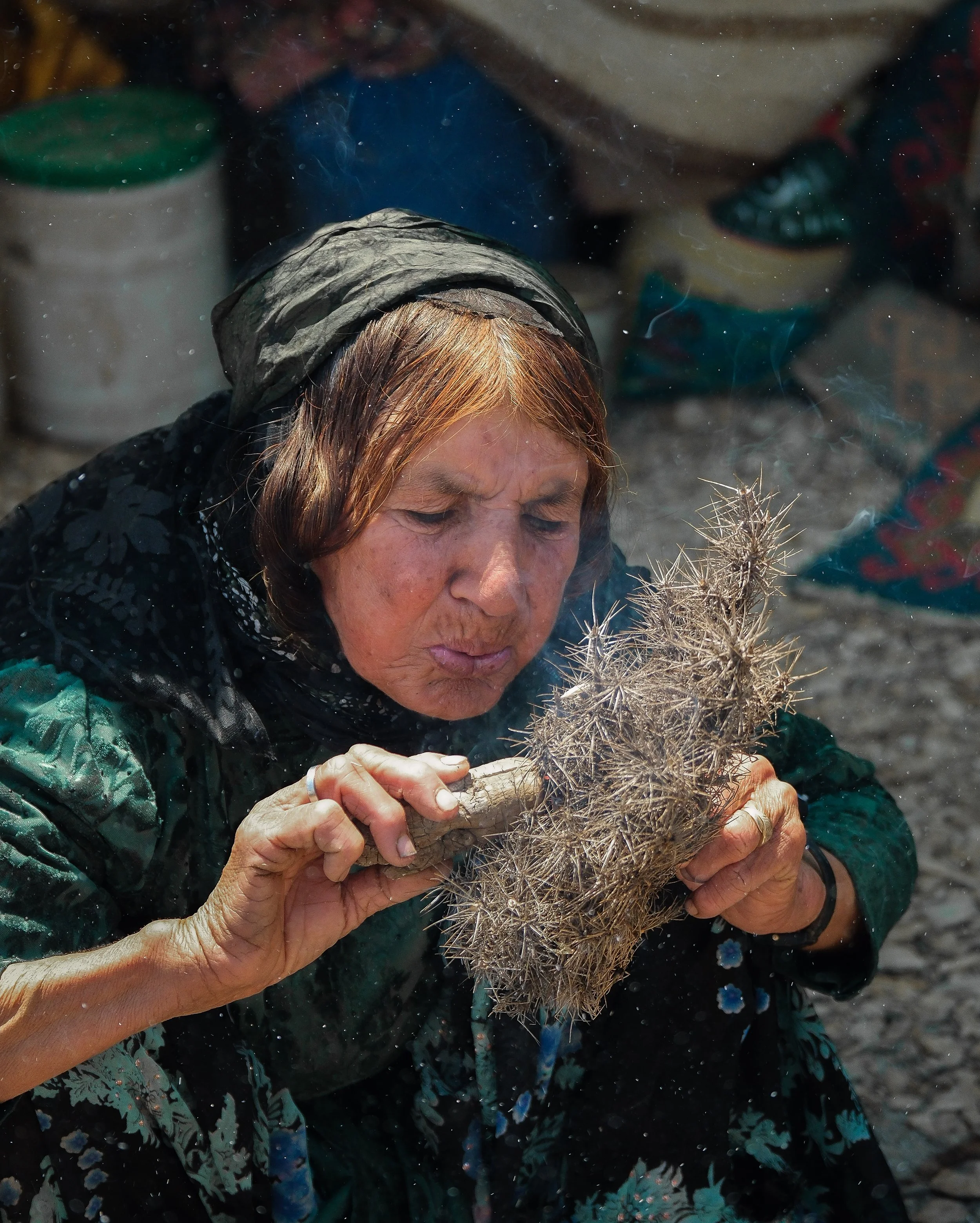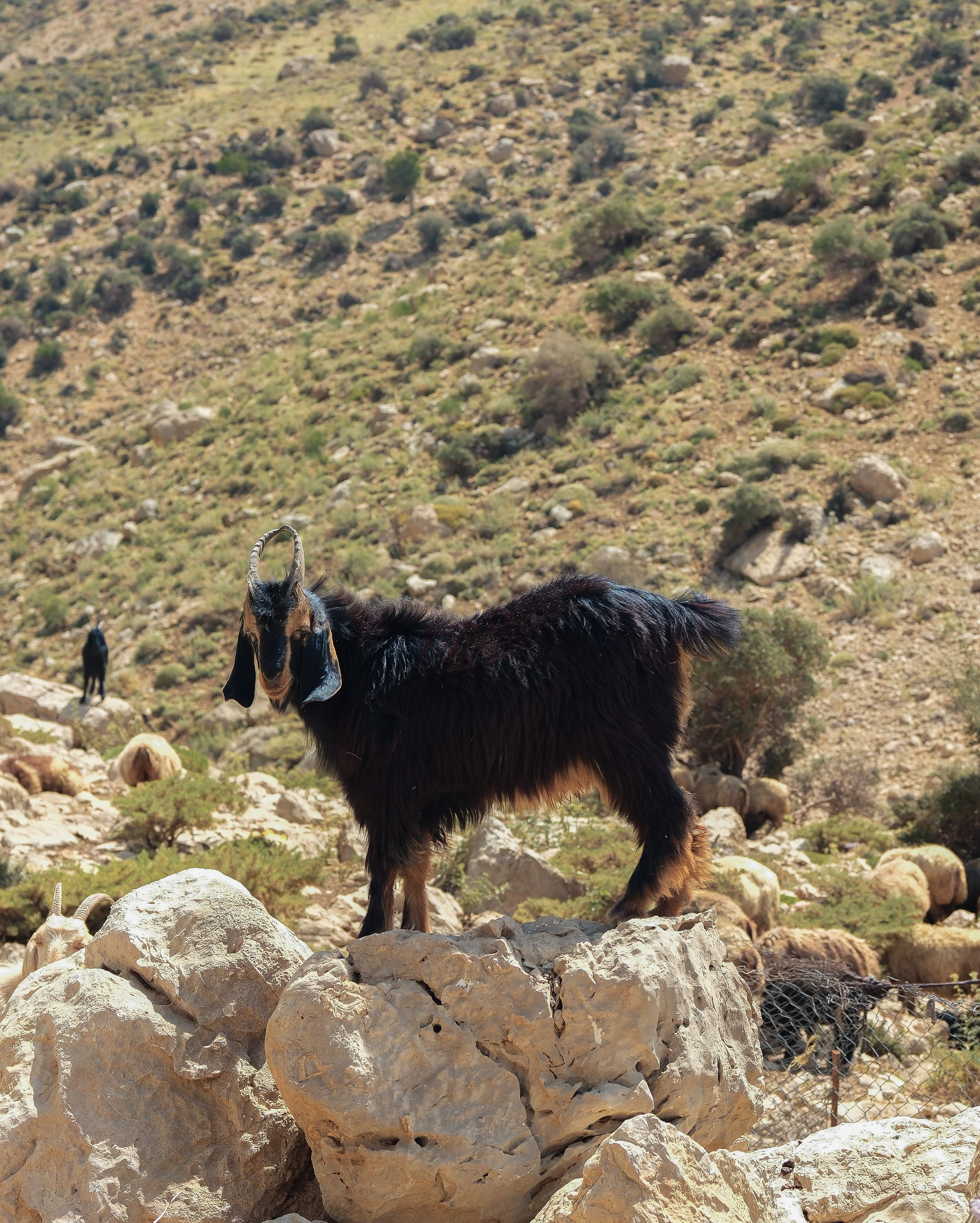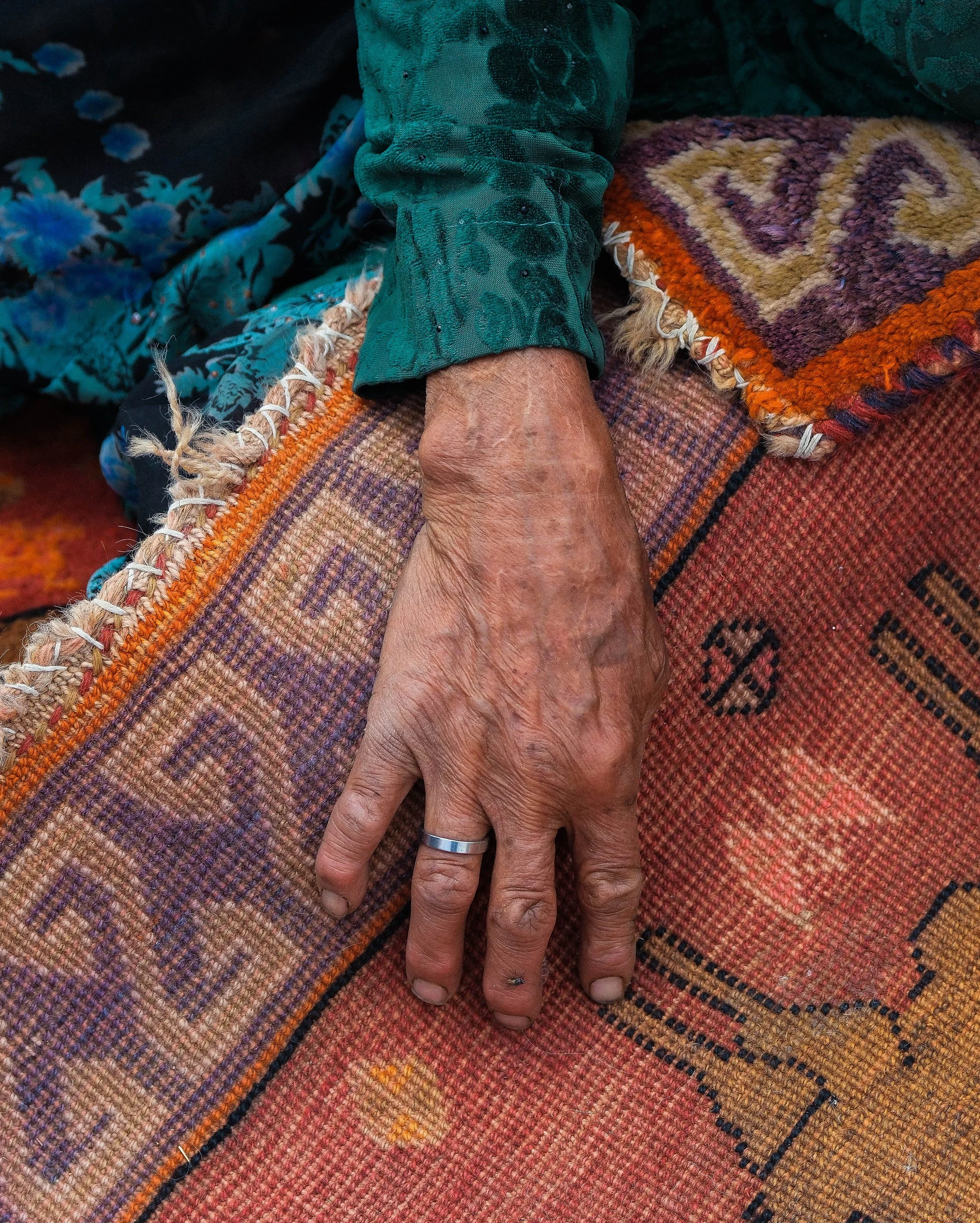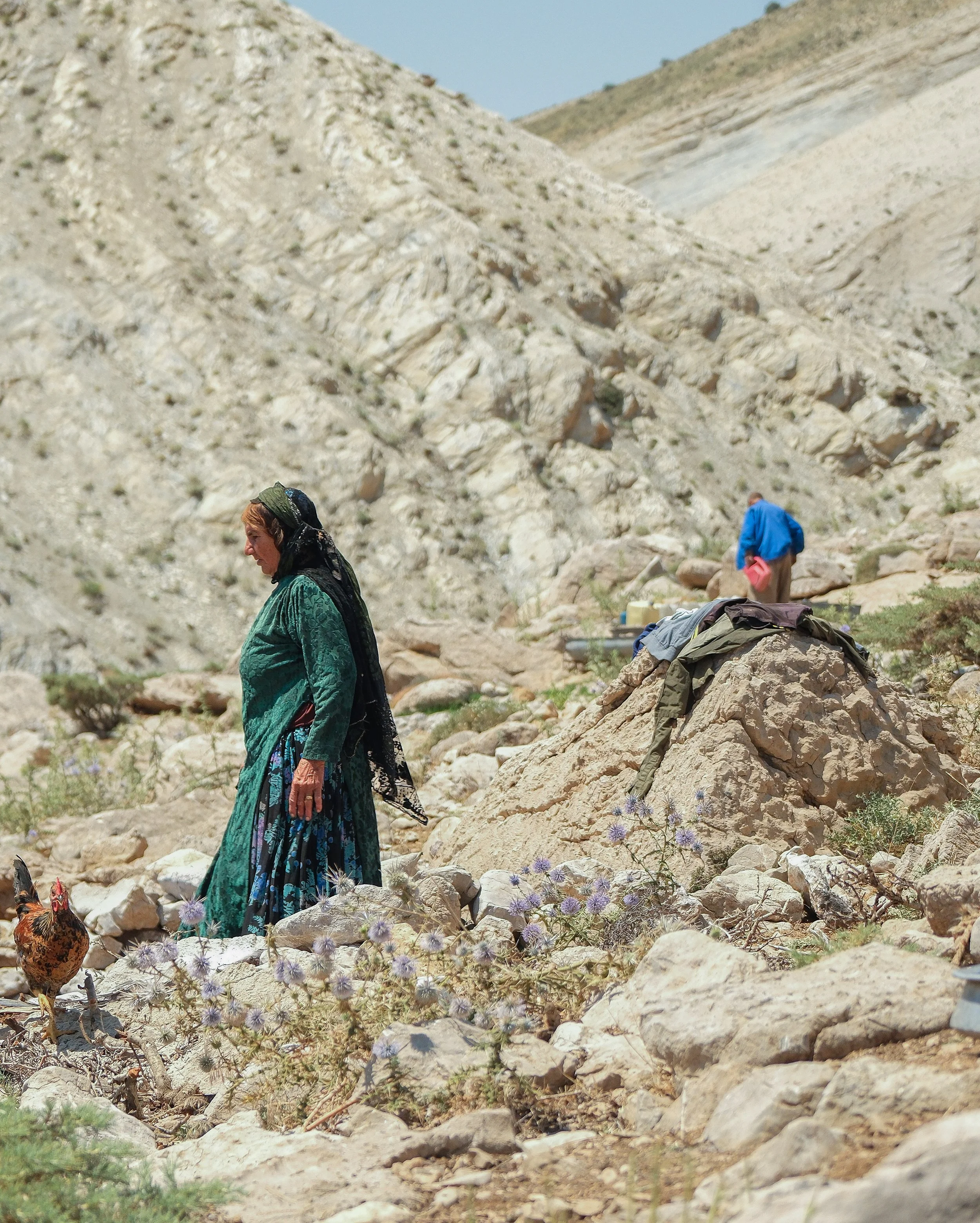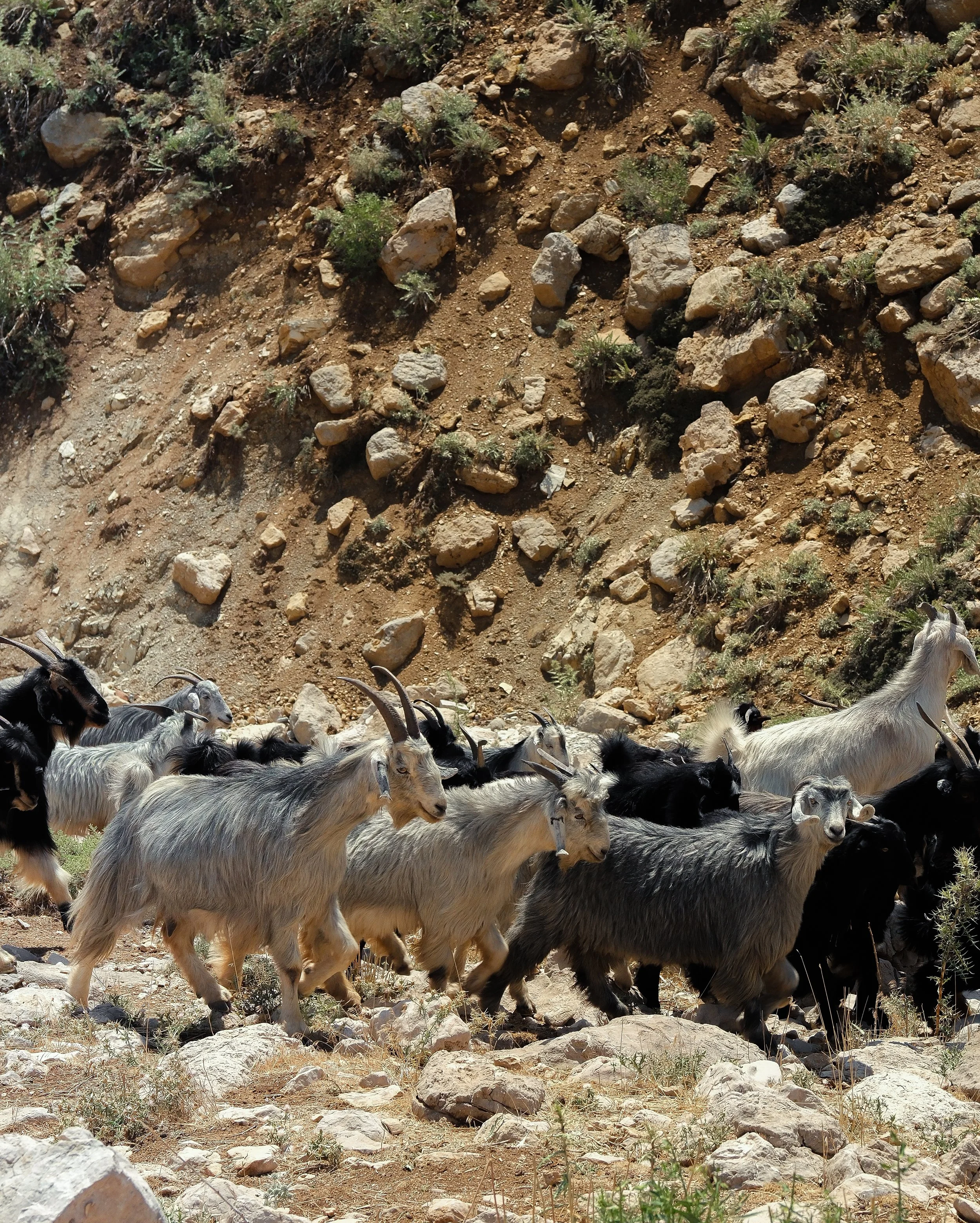This is about a world far removed from what most of us are familiar with. The internet does not exist. Food is sourced directly from the land– by hand, instinct and tradition. There are no streets. There are no shops. There are no crowds or hum of a larger civilization. Only wind, hills, livestock and memory. Hiding amidst the Zagros Mountains, some kilometers outside of Shiraz, live the Qashqai nomads– an indigenous Turkic-speaking people whose roots in southern Iran trace back centuries. Known for their seasonal migration and intricate handwoven textiles, the Qashqai have survived modernization, political upheaval and climate shifts. They have mastered a way of life entwined with nature and movement. As each year passes, the number of Qashqai nomads diminishes. Modern life and urbanization has managed to pull younger generations towards the cities. Only a few remain carrying on this lifestyle. One of them is Mazar; a remarkably wise and skillful woman who has spent all of her sixty two years in the mountains.
Beyond her ability to endure and adapt to mountain life, she’s also been a talented carpet weaver since the age of seven. When asked “How do you prepare for your carpet designs?”, she answers “There is no preparation. Look outside. What do you see? The mountains, the wild trees, the walnuts, the goats, the colours. I simply lay my eyes on the world and begin weaving”. For Mazar, weaving is not a task—it is a translation. She honours a language passed down generations. She does not only live in nature. She listens to it, speaks through it, and becomes it. She is Mazar.
The Woman and the Mountain
Life with Mazar, a Qashqai nomad.
Written & Photographed by Saina Bidshahri
Mazar takes a look outside her tent.
Mazar prepares yarn made from goat fur. The same fur that is used to create her carpets, roof and clothing for winter.
The perfect blu sky, cloud and hill found at the Zargos mountain, right outside Mazar’s tent door.
Mazar leads her goats into their coop at the end of the day, preparing for the evening milking routine. The goats are milked by hand, with the fresh milk collected directly into a metal pot. She then boils the milk on an open flame to sterilize it before use
Close-up of one of Mazar’s favorite rugs, featuring traditional motifs. The design includes stylized wild deer, walnut symbols, and native trees—reflecting the natural surroundings and stories of her region.
Mazar starting her own fire.
Frozen butter stored inside repurposed goat skin to function as a natural freezer. The insulated skin helps preserve the butter for extended periods without modern refrigeration.
A close-up of Mazar’s hands, showing visible signs of age and years of physical work. The texture, marks, and strength in her hands are a defining part of her presence.
Mazar tends to a herd of 120 goats, with support from her husband. Together, they manage daily tasks such as feeding, care, and guiding the goats.
